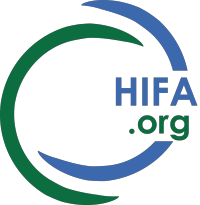Dear All,
I have listed the questions and responded in-line also grouping questions together for brevity (A case of more questions really - sadly...):
1. DO PEOPLE UNDERSTAND THE HEALTH, SOCIO-ECONOMIC AND ENVIRONMENTAL HARMS OF USING TOBACCO PRODUCTS? WHAT MATTERS TO THEM? HOW CAN THEY BE BETTER INFORMED?
I don't think we do, especially how tobacco is contributing to pollution:
individual - physiological processes/systems, psychological, (social) roles, ££ $$, spending - life choices
SCIENCES - pollution - micro-plastics, heavy metals ... water - local supply ... oceans e.g. ...
Soleimani F, Dobaradaran S, De-la-Torre GE, Schmidt TC, Saeedi R. Content of toxic components of cigarette, cigarette smoke vs cigarette butts: A comprehensive systematic review. Sci Total Environ. 2022 Mar 20;813:152667. doi: 10.1016/j.scitotenv.2021.152667. Epub 2021 Dec 25. PMID: 34963586.
"Smokers around the world buy roughly 6.5 trillion cigarettes each year. That’s 18 billion every day. While most of a cigarette’s innards and paper wrapping disintegrate when smoked, not everything gets burned. Trillions of cigarette filters—also known as butts or ends—are left over, only an estimated third of which make it into the trash. The rest are casually flung into the street or out a window"
“There's something about flicking that cigarette butt,” says Cindy Zipf, executive director of Clean Ocean Action. “It's so automatic.”
Cigarette filters are made of a plastic called cellulose acetate. When tossed into the environment, they dump not only that plastic, but also the nicotine, heavy metals, and many other chemicals they’ve absorbed into the surrounding environment."
https://www.nationalgeographic.com/environment/article/cigarettes-story-...(email to register and access)
2. DO HEALTH WORKERS HAVE ADEQUATE KNOWLEDGE TO PREVENT AND TREAT TOBACCO ADDICTION AMONG THEIR PATIENTS? WHAT MATTERS TO THEM? HOW CAN THEY BE BETTER INFORMED?
"Make every contact count" UK is an important initiative but it seems (part-timer view?) not stressed as might be?
https://www.england.nhs.uk/wp-content/uploads/2016/04/making-every-conta...
In mental health frequent reference to a person's ability to 'self-sooth'.Is this a 'pardon' for smoking / vaping? By continuing this addiction, fewer demands are made on struggling services?
3. WHAT IS THE ROLE OF THE TOBACCO INDUSTRY? WHAT CAN BE DONE TO ADDRESS MISINFORMATION FROM THE TOBACCO INDUSTRY?
Long-term approaches need to be mandated - with monitoring - for policy guidance.
4. DO PUBLIC HEALTH PROFESSIONALS AND POLICYMAKERS HAVE ADEQUATE KNOWLEDGE TO PREVENT AND TREAT TOBACCO ADDICTION IN THEIR COUNTRY? WHAT ARE CURRENT NATIONAL POLICIES AND WHAT MORE CAN BE DONE TO FULLY IMPLEMENT THOSE POLICIES?
Here, again - limited perspective but it appears:
- talk of evidence-based care AND evidence-based policy (really - examples and are they sustained?)
- public service broadcast - diminished - seen as 'Nanny State'?
- Is the question: how do you combat 'fatalism' from formative years - the cognitive triad: self - others - future (World)?
- Disjoint (as ever) NHS as treatment - 'after the fact' of morbidity - no nationwide health literacy/preventive service -
(What there is has been diluted, when UK public health was took under auspices of local authorities/government?)
- What are we doing in schools - plus 'missing' pupils post-COVID?
5. WHAT ARE THE PROS AND CONS OF ELECTRONIC NICOTINE DELIVERY SYSTEMS (ENDS; VAPING) (EG AS AN AID TO STOP SMOKING; AS AN ADDICTIVE ALTERNATIVE TO SMOKING AMONG YOUNG PEOPLE)?
Gould, Stephen Jay. (1991). Glow, Big Glowworm, Bully for brontosaurus : reflections in natural history. London: Hutchinson Radius.
Q #5 Vaping has been seen as a harm-reduction tool (a conceptual lock?), but many teenage adopters were not smokers initially. With vaping there is a lot to be said for the precautionary principle, but vaping is clear evidence and example of commercial determinant of (ill-)health. This applied to Q 3 below. The tobacco industry is still seen as tax income generator even while this is false economy - given the damage (the 'tab') to be picked-up by the state/health system (as applicable).
https://ash.org.uk/uploads/ASH-Policy-brief-on-vaping-February-2023-Fina...
and here are two that Miriam has added (feel free to add your own):
6. WHAT ARE THE GAPS IN EDUCATION FOR HEALTH PROFESSIONALS RELATED TO MENTAL HEALTH AND SUBSTANCE USE DISORDER, AND WHERE ARE THOSE GAPS MOST PRONOUNCED?
We need to define 'integrated care' AND with it 'health education and promotion'. Can we better understand 'pollution' in informational terms (HIFA!!) - in the form of advertising - there are controls - but have they waned recently?
7. ARE THERE ANY GAPS IN MEDICAL, NURSING, OR OTHER HEALTH PROFESSIONAL TRAINING?
As previously - yes - we need a generic conceptual framework for local, global and glocal health across academia, education (secondary level ...) and all health disciplines and fields of theory and practice:
Smoke gets in your eyes, hair, socks and underwear....
Previously: 'smoking'
https://hodges-model.blogspot.com/search?q=smoking
"Most impediments to scientific understandings are conceptual locks, not factual lacks. Most difficult to dislodge are those biases that escape our scrutiny because they seem so obviously, even ineluctably, just. We know ourselves best and tend to view other creatures as mirrors of our own constitution and social arrangements. (Aristotle, and nearly two millennia of successors, designated the large bee that leads the swarm as a king." p.256.
Regards,
Peter Jones
Community Mental Health Nurse, Tutor & Researcher
Warrington Recovery Team, NW England, UK
Blogging at "Welcome to the QUAD"
http://hodges-model.blogspot.com/
http://twitter.com/h2cm
HIFA Profile: Peter Jones is a Community Mental Health Nurse with the NHS in NW England and a a part-time tutor at Bolton University. Peter champions a conceptual framework - Hodges' model - that can be used to facilitate personal and group reflection and holistic / integrated care. A bibliography is provided at the blog 'Welcome to the QUAD' (http://hodges-model.blogspot.com). h2cmuk AT yahoo.co.uk

